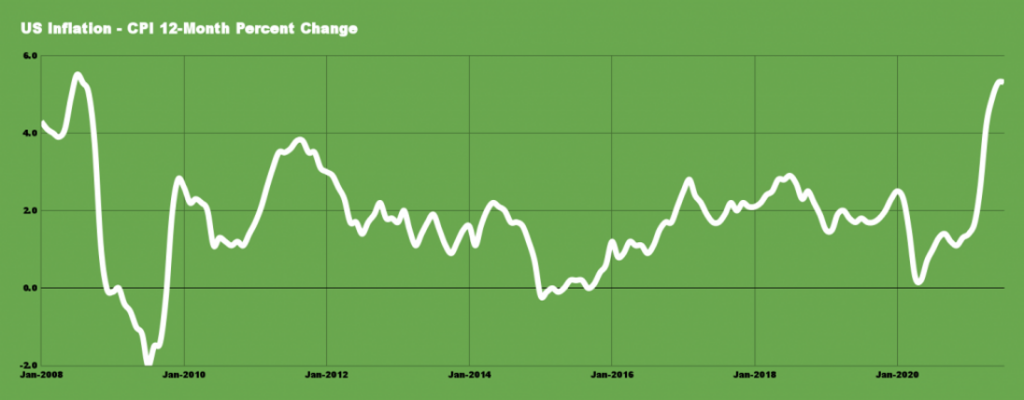Global inflation is rising, in the US, in Europe, and in the UK. Surging consumer demand and problems in supply chains due to mounting coronavirus constraints pushed prices to new heights. Economic indicators suggest rising inflation may be here for a while, and some experts even believe this may become the new normal. Retailers and suppliers alike are searching for ways to protect themselves from rising costs. In such turbulent times, players are looking to pricing solutions to shield themselves from shrinking margins. Yet, a sophisticated pricing infrastructure can do more than protect vendors from the coming storm: It can turn inflation from a threat into an opportunity.
Inflation Is Rising Across the Board
Inflation, in a nutshell, means currency value is falling, and as a result, prices of goods and services are rising. After over a year of Covid-19 restrictions, pent-up consumer demand has met strained delivery routes and supply chain problems. As a result, inflation rates have risen all across the board. The US Consumer Price Index for the 12 months ending in June 2021 went up 5.4% – its highest rise since August 2008. The Index rose another 0.5% in July compared to June, solidifying a higher than expected price jump after 2020.
In Europe, the eurozone annual inflation rate is expected to be 2.2% for July – the highest rate since October 2018 and above economists’ expectations. In Germany, July’s inflation reading hit a 13-year old high. And in the UK, the Bank of England predicts inflation will rise to an annual rate of 4% later this year, double the central bank’s target and the highest rate for over a decade.

Meanwhile, the emergence of the Delta variant is further complicating the situation. The new version of the coronavirus threatens to extend the time needed for supply chains to catch up with demand, exacerbating inflation.
Replenishment Costs are Jeopardizing Margins
Policymakers in Europe and the US have already made clear they plan to abstain from interfering. Thus, retailers and suppliers are left to fend for themselves against future spikes and fluctuations in the costs of goods. Such changes require a paradigm shift in pricing strategy and the ability to act fast to avoid damages.
Since inflation increases inventory costs, businesses need to develop new purchase strategies to minimize future price spikes. They need to predict the right time to replenish supply while avoiding cost spikes that will affect their margins. Outdated methods of manually analyzing multiple data sources with spreadsheets can’t handle the fast, complicated calculations needed for such a challenge. Most of all, the old ways can’t cope with the automatic and quick response times required to shield sellers from rising inflation.
Instead, retailers and brands shift to pricing infrastructure that considers future inflation changes when predicting supply replenishment costs. For a start, they benefit from the pricing infrastructure’s ability to monitor competitor pricing and to aid in making more informed decisions. They can better predict consumer behavior and manage future inventory, saving enough goods for a time when replenishment costs will be much higher. This way, they can minimize stock renewal after prices have peaked.
Maximizing the Value of Inventory
Deploying an agile pricing solution becomes necessary to automate, optimize, and manage prices in an inflationary environment. But the threat can also serve as an opportunity. The risk of increasing supply replenishment costs may push some sellers to “sit” on parts of their inventory, waiting for real selling prices to rise. Sellers can award higher prices to their commodities, temporarily driving sales down while waiting for buyer demand to catch up. Thus, saving enough inventory to sell at higher prices and shielding themselves, at least partly, from shrinking margins due to rising procurement costs.
Such tactics require a structured way to incorporate variables like time-sensitive inventory, sales rate, and fluctuations in supply prices. All need to be assessed together to predict future selling prices and supply costs and renewal dates. Eventually, sellers will need to replenish their inventory. Still, they can use predicted models to maximize the value of their current stock and evade potential cash flow problems.
Doing so requires replacing the old datasheets with a smart, agile pricing infrastructure that produces predicted costs automatically. Using the right tools to calculate the right selling prices across multiple selling channels can help tread these troubled times and make lemons into lemonade.










